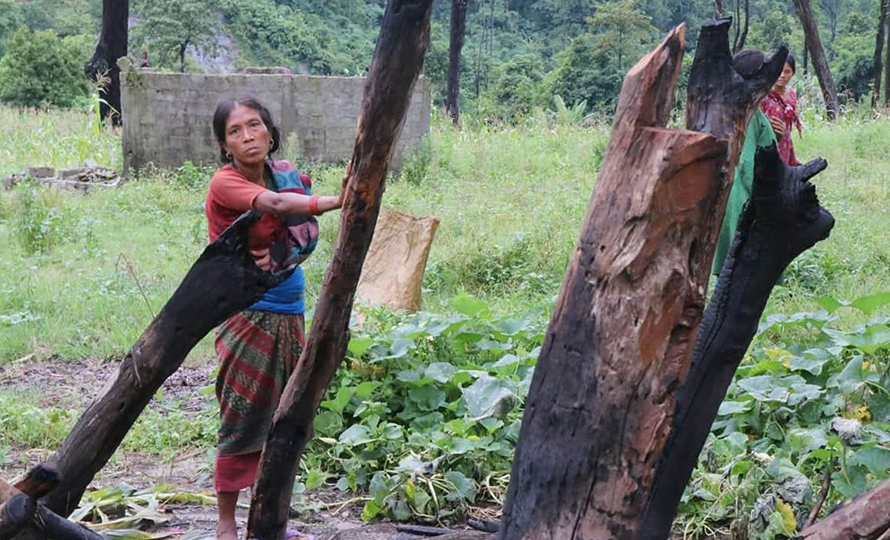
Indigenous Technical Knowledge refers to the intellectual, technical, environmental, and health-related wisdom and skills that have been used and trusted since ancient times. These forms of knowledge have evolved alongside human civilisation to meet needs and make tasks easier.
Although the exact origins are unknown, it is believed that such technical knowledge developed concurrently with human progress. This knowledge and skills have been passed down through generations and hold great significance in sustainable living and the conservation of natural resources. Indigenous technical knowledge encompasses various forms, including stories, songs, folklore, rituals, dance, cultural values, traditions, community laws, local languages, agricultural systems, tools, plant species, and animal breeds.
This knowledge is traditionally transmitted orally from one generation to the next.
Nepal is a country rich in geographical diversity, home to numerous ethnic groups, each with its own unique indigenous knowledge and skills. The varied geography and ethnic diversity mean Nepal has a wealth of indigenous technical knowledge. Information and communication channels have made it easier to see the direct and indirect impacts of this knowledge on the progress and development of Nepali society.
This knowledge promotes the appropriate use and consumption of natural resources and materials and is feasible from social, political, and environmental perspectives. This knowledge has continuously aided human civilisation, improving agricultural production, soil fertility, water conservation, pest and disease control, and human health balance.
In agriculture
When asked about the fundamental needs of humans, we easily respond with food, clothing, and shelter. These needs are essential not only for humans but also for animals and other living beings. In rural areas, tools like sickles, scythes, axes, chisels, and saws are used to clear surrounding weeds and forests, and the land is prepared using hoes, spades, mattocks, picks, and shovels.
Local seeds, still in use, have deep roots that protect the soil from erosion. Practices like intercropping beans with maize or planting pulses with mustard continue due to their benefits in fixing nitrogen in the soil and enhancing fertility.
Even in the absence of proper irrigation systems, rainwater is collected by creating ridges around fields, and the practice of ploughing with oxen remains. Traditional tools like the plough, yoke, beam, and wooden ploughshares are still effective in making barren land fertile.
These tools do not significantly harm the soil, preserving the habitat of soil organisms like earthworms. Proper water management, fertilisation, and weeding, along with safe harvesting and storage of crops, are knowledge passed down from ancestors. These practices, developed from local resources and skills, are examples of indigenous technical knowledge.
In pest and disease control
Indigenous technical knowledge is also applied in controlling pests and diseases. Scarecrows and other deterrents are used to protect crops from birds and animals. Various traps are set to catch animals like porcupines, jackals, tigers, and bears.
To prevent rats from damaging paddy fields, cats are kept, and to control insects, solutions made from plants like Neem, Bojo, Tulsi, Marigold, and others are used. Practices like using ash, curd, and cow urine help repel harmful pests and improve crop yields. Traps and physical removal methods are used to manage pests.
In health applications
Nepal’s diverse ethnic groups have unique traditions and beliefs linked to health. For example, the Kirati community believes that taro should not be eaten before Kushe Aunsi, as it can affect brain function. Scientifically, taro is not fully mature before this time and may lack essential vitamins, making its consumption potentially harmful.
Elders advise against eating while lying down, as it can lead to choking. There is also a belief that eating soybeans after Baisakh Poornima can cause skin rashes, which correlates with the timing of soybean sowing and the potential for inadequate storage leading to skin issues. Roasting pork, which has high fat content, can lead to health problems if not cooked properly.
Indigenous technical knowledge also includes various practices to maintain hygiene and prevent diseases. For instance, avoiding defecation and urination near water sources helps keep them clean and prevents waterborne diseases. Similarly, not urinating on roadsides helps maintain environmental cleanliness.
In the forests, herbs like Chiraito are used to treat fever, while plants like ghodtapre, pakhanbed, and others are used for various ailments. The knowledge of these plants and their uses is passed down through generations.
In conclusion, Nepal still practices many forms of indigenous technical knowledge, particularly in organic farming, which has been practised by our ancestors. Concepts like liquid manure, composting, mixed cropping, zero tillage, and pesticide-free farming, which are gaining popularity today, were already in use by our forefathers. Organic rice exports from Nepal in the 1980s highlight this practice’s historical significance.
However, many of these invaluable knowledge systems are at risk of disappearing due to modern advancements and a lack of proper documentation and research. Young people often dismiss this knowledge as mere superstition, and government efforts to research and preserve these practices are lacking. By identifying, analysing, and incorporating these traditional skills into modern civilisation, we can ensure the well-being of humans, animals, the environment, and nature.


















